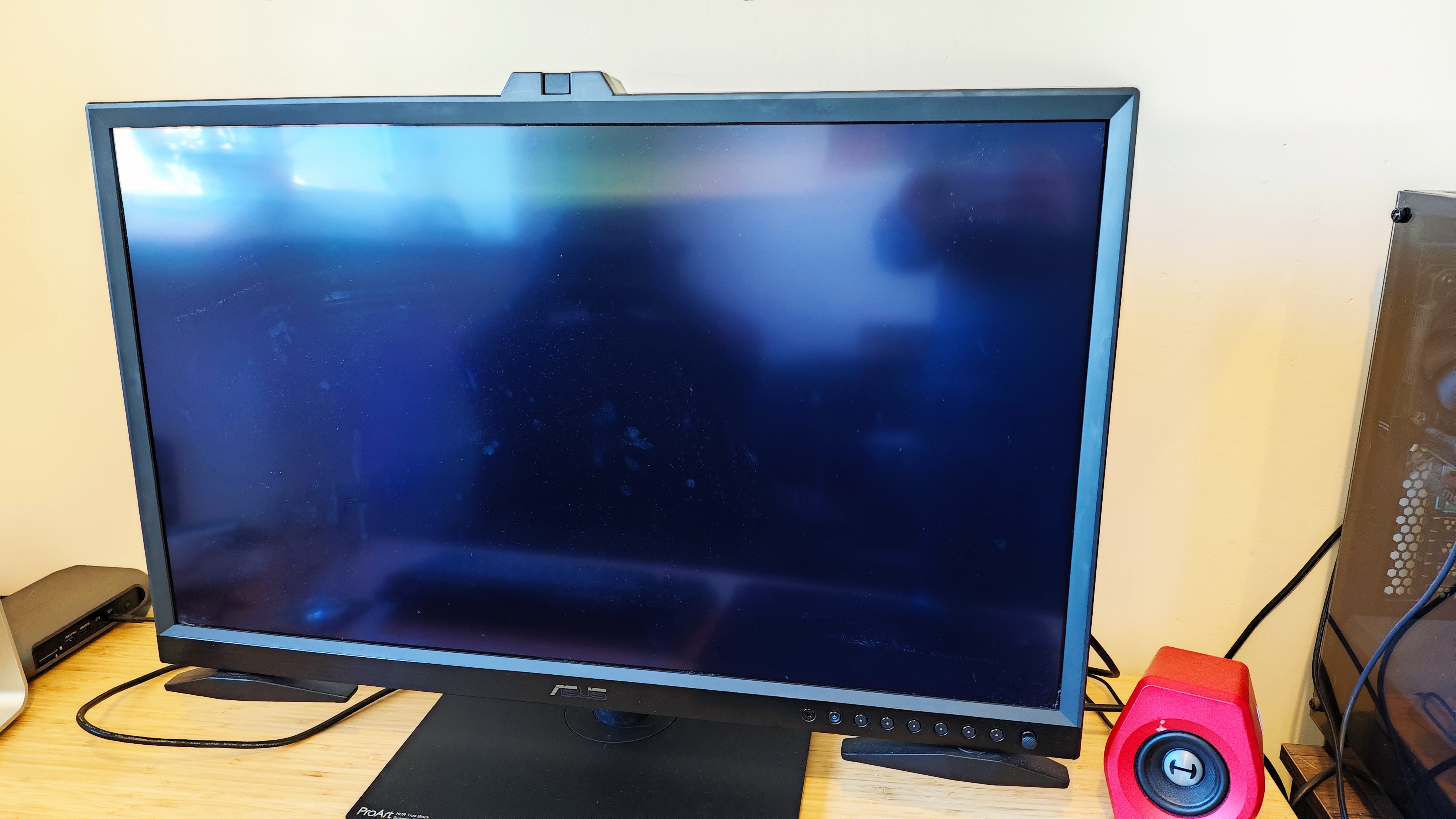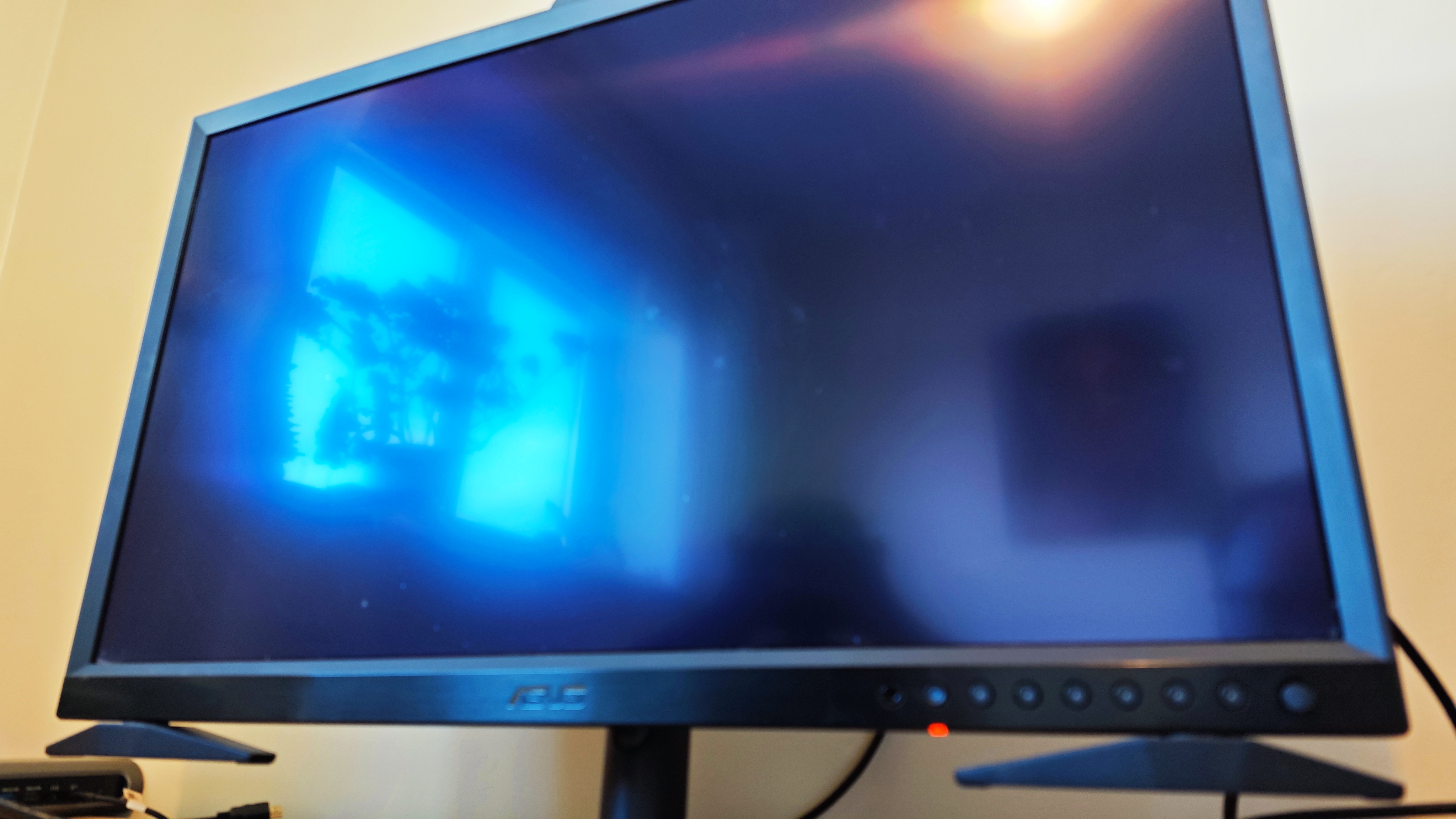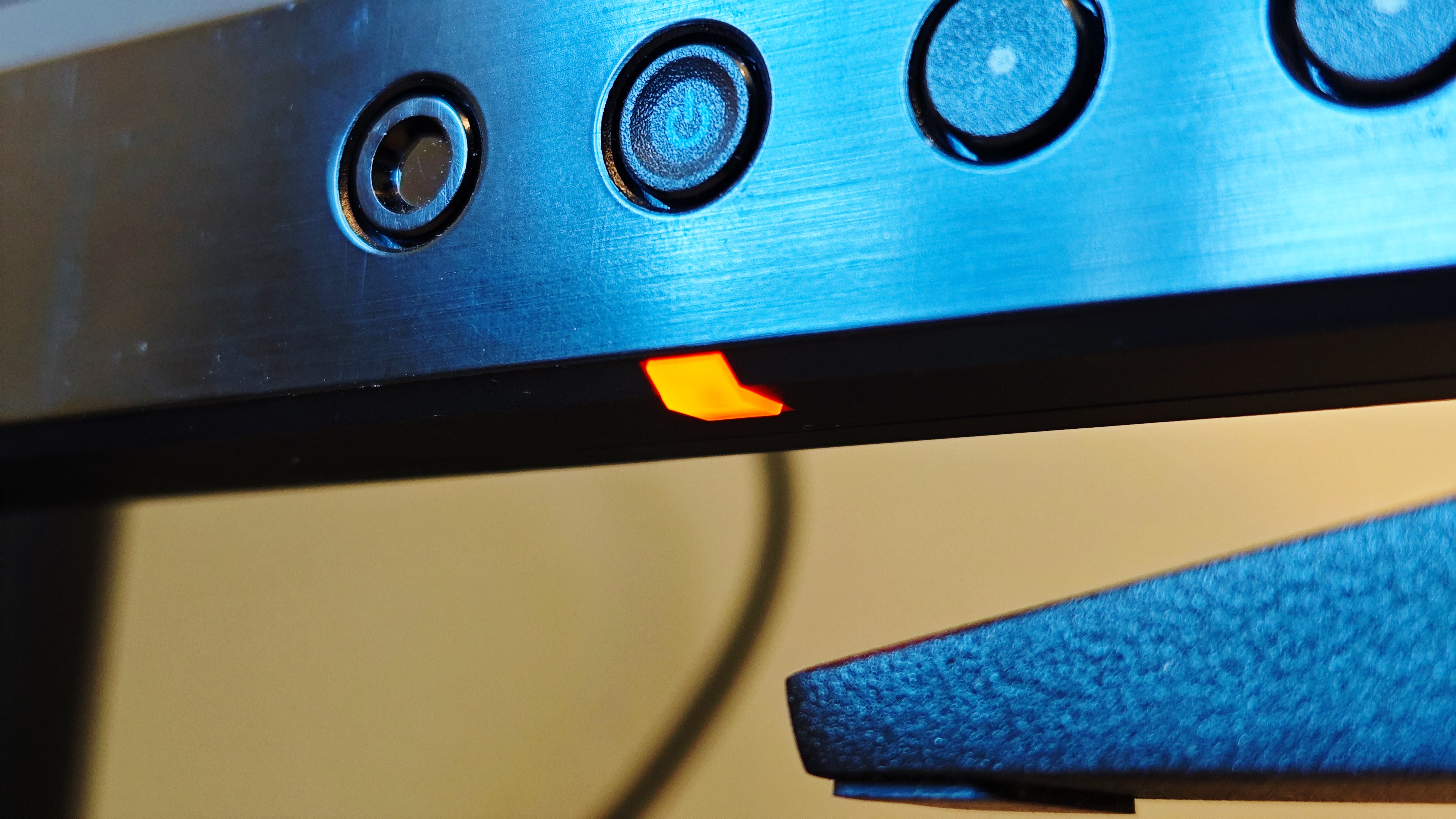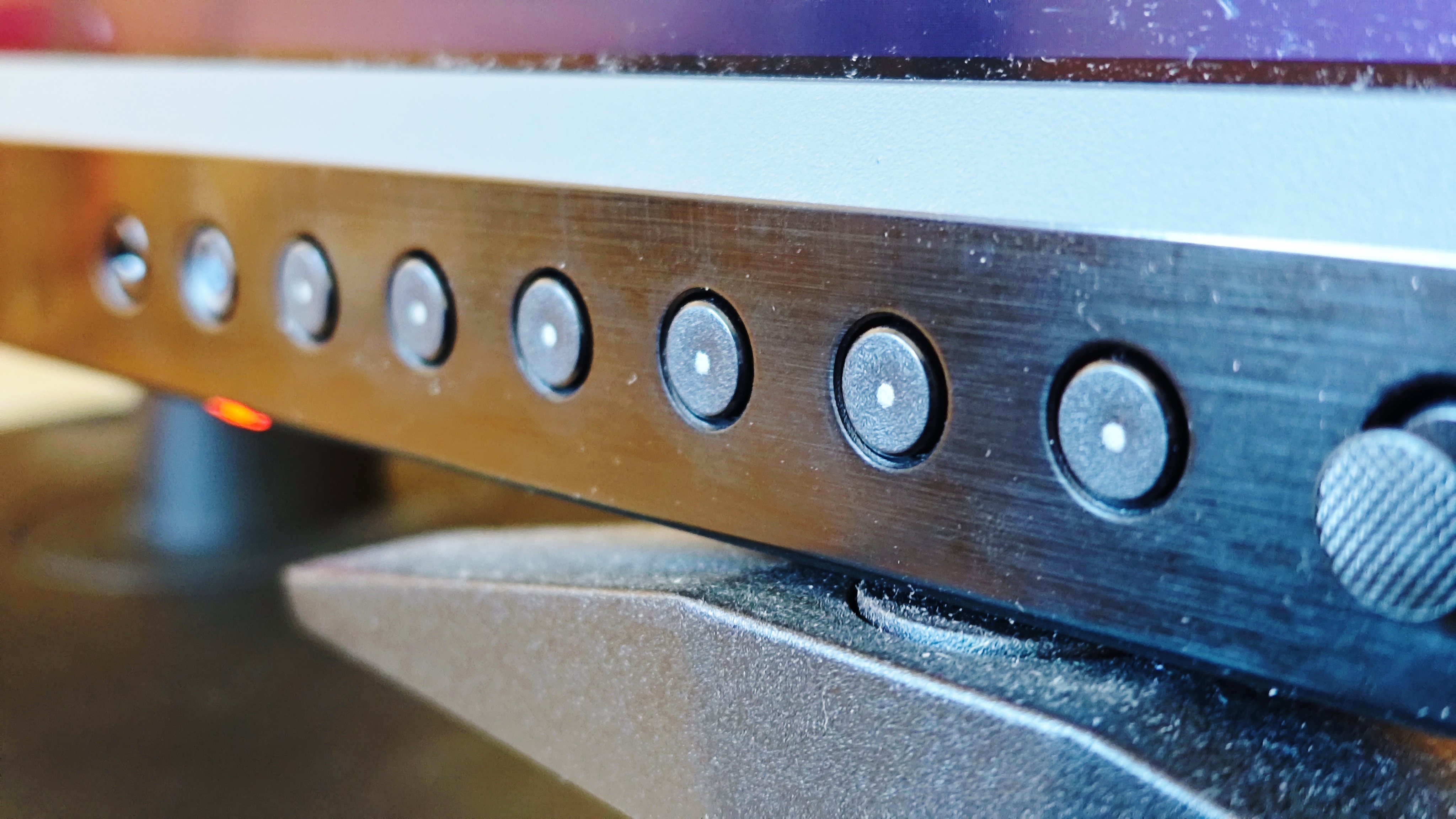
The ASUS ProArt OLED PA32DC is not just a big monitor; it's also one of the most expensive monitors you can ever hope to afford.
Even though it's been out for a few years now, this 4K behemoth is still one of our favourite monitors for graphic design, so when I finally had my chance to get my dirty mitts on a unit to test over the last few weeks, I got very excited.
I ran Photoshop and other photo-editing software on it, tested its highly vaunted colour gamut, and ran animation and graphic benchmarking software on it, and watched 4K films and TV on it to see whether it still held up among the latest offerings on the display market. I even tried gaming, but with a max refresh rate of 60Hz, that may have been a step too far...

ASUS ProArt OLED PA32DC review: Key specifications
ASUS ProArt OLED PA32DC review: Design and build

"Are they heavy? Then they're expensive," my favourite on-screen combination of lawyer and dinosaur meal, Mr. Gennaro, famously said of the night-vision goggles featured in 1993's Jurassic Park. That philosophy is clearly held in high regard in ASUS Studios, as when you've attached the display to the accompanying stand (using screws and a screwdriver, none of your fancy-pansy click-on VESA slots here, thankyouverymuch), the whole thing weighs over 12kg (26lb). That means you have to make sure you've cleared all the space you need to clear before heaving it into place on the desk.
Also, pro finance tip, make sure you don't read the price tag as you're carrying it, because you might faint and cause a crippling hike to your contents insurance for the next decade. At £3,699.99 in the UK and $3.499.99 in the US, this is by orders of magnitude the most expensive monitor to ever grace my humble home-office desk.
It's big, bulky and has larger bezels than most monitors I've seen in recent years. It sits very imposingly on its stand, but is nicely adjustable to suit my desk setup while remaining reassuringly sturdy at all times. The design is a little more 'old-school' than I've gotten used to, as well, as the OSD control is made up of several buttons along the bottom bezel, along with a joystick-type controller that takes a little delicacy to behave exactly the way I want.
Thankfully, all the ports on the back are fairly easy to access, and there is a very decent selection of ports too: There's one USB-C that's also a DisplayPort Alt Mode port, a dedicated DisplayPort 1.4, three HDMI 2.0 ports, and four USB-A 3.2 Gen 2 ports, along with an earphone jack and PC audio input. The USB-C port supports power delivery of up to 65W too, so you can use the monitor as a makeshift USB hub for your laptop (I'm looking at you in particular, port-deprived MacBook owners).
It's easy to set up, and once you switch it on, that big OLED panel quickly impresses.
ASUS ProArt PA32DC review: Features and performance

Yes, that 31.5-inch OLED panel is the top feature here, and ASUS have gone all out to maximise its creative potential. There's a built-in colorimeter, controllable via ASUS's own calibration software, so I didn't need to take my Spyder out to get this one measured and set up for its colour gamut.
And boy, is it stacked for screen features. It supports not one, not two, but three different HDR standards, HDR10, HLG and Dolby Vision, all flicker-free with 1.07 billion colours, a stated 1,000,000:1 contrast ratio (which thanks to the way human eyes work, is effectively infinite contrast) and a colour accuracy of △E< 1 (file that under 'supremely accurate'). And the preset ProArt video features to choose from are [deep breath] Standard, sRGB, Adobe RGB, DCI-P3, Rec. 2020, DICOM, Rec. 709, HDR_PQ DCI, HDR_PQ Rec2020, HDR_HLG, HDR_HLG DCI and Dolby Vision. So if you're a video editor, photo editor, photographer, graphic artist, 3D artist or animator, odds are you'll find your desired colour setup already pre-programmed for you in there (and if not exactly, then close enough to only require minimal adjustments).
The peak brightness in HDR mode is stated at 500 nits with 99% DCI-P3 colour coverage, and even on this test unit, which is now a couple of years old and well used, it reached 492 nits in my measurements, with 98% colour coverage. And with that OLED panel, those 492 nits popped much more vividly than on any other type of panel you can get.
The one thing the ProArt PA32DC does not cater for is gaming. Maxing out at a 60Hz refresh rate, ASUS's eyes are firmly set on creatives who need near-flawless accuracy over hypersmooth motion if you want to bolt around the Spa-Francorchamps in your F1 game. Whenever I fired up a videogame, even ones who don't require 220mph speed along a grandstand to be impeccably rendered, I was starkly reminded that I wasn't testing a gaming monitor this month, with the movement noticeably more janky than I've gotten used to recently. However, this isn't the intended use for the monitor, but rather an underlining of its squarely creative-professional aim.
ASUS ProArt PA32DC review: Price

Okay, let's sit down, get the seasickness pills ready and hold onto something. On ASUS's own eshop, The ASUS ProArt PA32DC comes in at an anxiety-inducing £3,699/$3,499. That puts this monitor in very exclusive, very studio-purchase territory, to suit its very studio-spec features, I guess. That said, you can get professional 4K OLED monitors from makers like BenQ for about half this.
Should I buy the ASUS ProArt PA32DC?

Do you need absolute top-spec colour accuracy with infinite contrast and built-in features that come up to your eyeballs? And do you have a sizeable trust fund to dip into? Or are you a midsize-to-large studio looking for the best for your high-end editors? Then the ASUS ProArt PA32DC makes sense. It's packed with features, offers stellar display performance across several different disciplines, including video, photo, graphic design and animation, and it's astronomically expensive. It puts it in very exclusive territory, but in that territory, few can match it.







